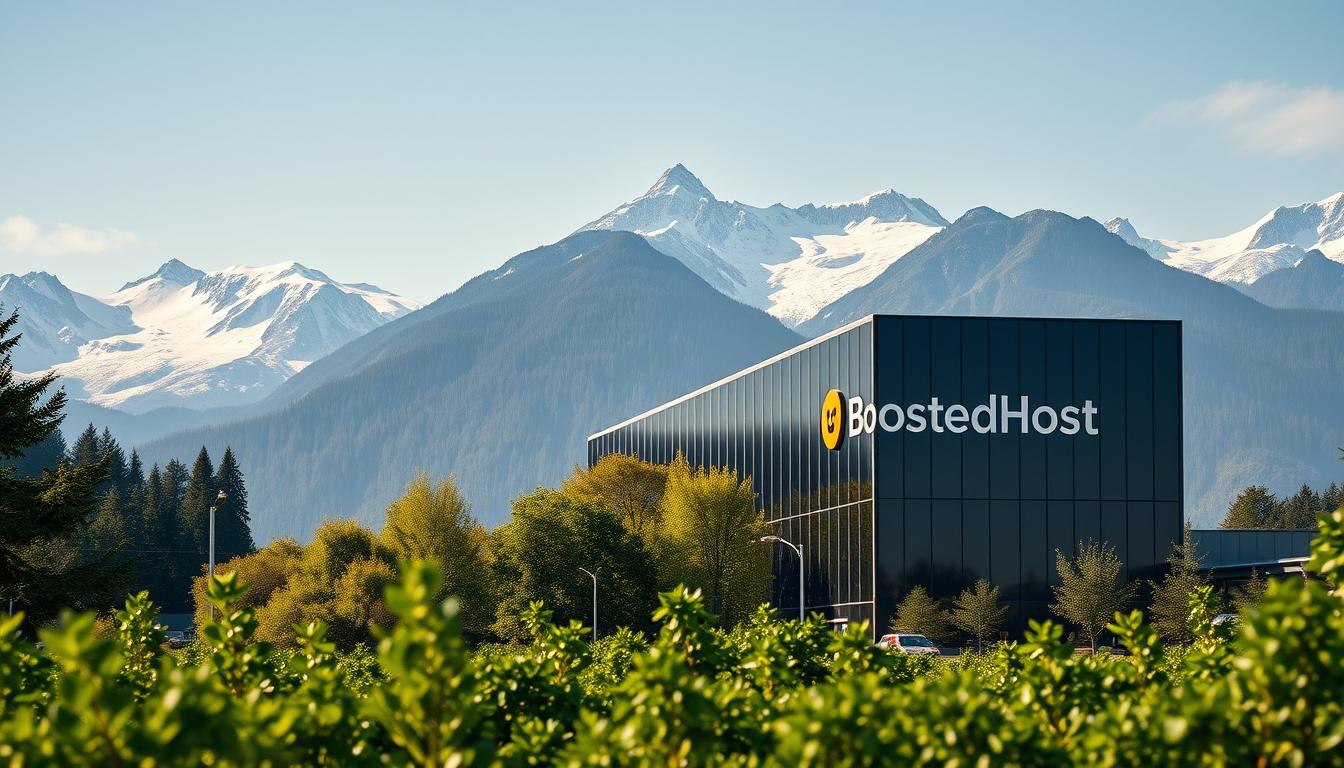Surprising fact: over 70% of Swiss-hosted sites now run on WordPress-optimized stacks that include 100% SSD, PHP 8.4, HTTP/2, and JIT — and that tech shift cuts load times by seconds during peak traffic.
You need a clear, no-nonsense view of the market so you can spot which provider gives real speed and real uptime. This intro shows what modern stacks deliver: fast page loads, geo-redundant data centers, DDoS protection, and multilingual support.
Expect practical details: backups every six hours with 14-day retention, unlimited email, SSL, and developer tools like Git. Plans scale from small sites to growing business pages with more storage and RAM as you expand.
You’ll save time picking a plan when you know which services are must-haves and which are extras. Read on to see who actually backs claims with measurable performance and real support from a trained team.
Key Takeaways
- Swiss stacks now focus on speed: SSD, PHP 8.4, HTTP/2, and JIT boost performance.
- Look for automated backups, SSL, and geo-redundant data centers for real uptime.
- Multilingual support and 24/7 monitoring reduce downtime and save you time.
- Plans scale from entry to advanced—match resources to your site or business needs.
- Promos like 50% off the first year and free activation lower early costs.
Why choose Swiss WordPress hosting for speed, reliability, and data protection
Choosing where you place your site affects speed, privacy, and how well it weathers traffic surges.
Swiss data centers are certified and operate under the Swiss DPA. That gives you clear legal protection for your data, plus geo‑redundant storage so a single outage won’t take your website offline.
Swiss data centers, geo‑redundancy, and DPA‑compliant privacy
Host locally to keep data governed by strict privacy rules. Geo‑redundancy mirrors storage across facilities, minimizing downtime and keeping logs and encryption in place from day one.
What “fast” really means: 100% SSD storage, PHP 8.4, HTTP/2, and smart caching
- Speed stack: 100% SSD, PHP 8.4, HTTP/2, and JIT shave milliseconds under load.
- Security and resilience: DDoS mitigation, a Web App firewall, daily scans and web filters protect your site.
- SSL by default: Let’s Encrypt certificates encrypt traffic and meet SEO expectations.
If you want a quick checklist to judge a provider, see this practical web hosting overview: Swiss web hosting details and plans.
best wordpress hosting switzerland: how we evaluate providers in 2025
Our evaluation tests the practical inputs that matter so you can pick a plan that fits your goals. We run load checks, validate resource tiers, and confirm how providers handle traffic spikes.

Core criteria: performance, uptime, and scalability
Performance means SSD storage, clear RAM tiers (2–8 GB), PHP 8.4, HTTP/2, and optional CDN. We measure real response times and how sites behave under concurrent users.
Uptime is judged by geo‑redundant storage and how providers auto-scale or throttle during peaks.
Security checklist
We look for included SSL certificates, DDoS mitigation, a tuned WAF, and backups every six hours with 14‑day retention. Fast, documented restores are a must.
Support that matters
Multilingual Swiss support with quick response times, clear documentation, and developer tools like Git and SSH earns higher scores.
“We prioritize transparent metrics and honest tools so your site stays fast and safe.”
Top Switzerland hosting plans compared by use case: starters, growing sites, and SMEs
Match your needs to a hosting plan so you don’t pay for unused resources or face a last‑minute migration. Below are compact summaries that map typical websites to the right tier.

For starters
Starter: 100 GB SSD, 2 GB RAM, SSL, backups every 6 hours. This is ideal if you launch a small website or blog. You also get 10 databases, 750 subdomains, unlimited connectable domains, and Swiss support.
For self‑employed and associations
Mid‑tier: 250 GB SSD, 4 GB RAM, 50 databases, 1,500 subdomains. Use this plan for a growing business site or association with multiple landing pages and campaigns.
For developers and SMEs
Advanced: 500 GB SSD, 8 GB RAM, 100 databases, Git, custom CGI, and higher throughput. This tier is built for staging, CI workflows, and heavier traffic.
Multi‑site and eCommerce
- CDN Basic + Web Cloud databases for stable page loads.
- Unlimited domains and generous subdomain limits support multi‑site setups.
- Promos: 50% off first year and free activation, billed in CHF.
Security, backups, and compliance you can trust
Protecting your site starts with a security posture that runs 24/7 and is easy to manage. This section explains the defenses and recovery tools that run quietly in the background so you can focus on publishing.
Always-on protection: DDoS mitigation, Web App firewall, daily scans, and web filters
Network-level DDoS mitigation keeps your pages reachable during attacks. A tuned Web App Firewall filters malicious payloads before they reach your application.
Daily vulnerability scans and web filters detect issues early. Clear logs and alerts make it simple to spot anomalies and act fast.
Backup strategy done right: every 6 hours with 14‑day self‑service restores
Backups run every 6 hours so you always have recent restore points. This is crucial for content-heavy sites and frequent updates.
Self-service restores are fast and free of charge during the 14‑day retention window. You can roll back without a support ticket.
SSL options for trust and SEO: free Let’s Encrypt or premium certificates
SSL is included by default via Let’s Encrypt. If you need stronger validation, upgrade to a premium ssl certificate (DV or EV).
With data stored in Swiss data centers and geo-redundant copies, your recovery plan covers both logical and physical risks and meets DPA compliance.
- Baseline defense: DDoS + tuned WAF.
- Early detection: daily scans and web filters.
- Reliable restores: 6‑hour backups and free self-service recovery.
- Trust & SEO: SSL by default, upgradeable to premium certificates.
| Feature | What it does | Why it matters |
|---|---|---|
| Network DDoS | Blocks volumetric attacks | Keeps your site online under load |
| Backups | Every 6 hours; 14‑day retention | Quick recovery for content and updates |
| SSL options | Let’s Encrypt + premium certificates | Encrypts traffic and boosts user trust |
“A layered security stack reduces your operational burden so you can publish and grow with confidence.”
Performance stack and tools that make your WordPress site fly
Real-world speed is about practical tech choices and the management tools that tie them together. Pick a stack that pairs 100% SSD, PHP 8.4, HTTP/2, and JIT with tuned caching for measurable gains.
Dedicated PHP memory, JIT compilation, and caching layers
Dedicated PHP memory and JIT cut request latency and curb CPU spikes when plugins pile up.
Layered caching (object, page, and edge CDN) keeps queries and assets light under heavy load.
1-click install, AI Site Assistant, and intuitive control panels
A one-click install gets your website online fast. An AI Site Assistant can draft sections of content so you focus on editing.
The control panel is simple and helps you manage themes, SSL, and backups without friction.
Developer workflow: SSH, Git, custom scripts, staging‑friendly databases
SSH and Git support streamline deployments and rollbacks. Custom scripts and staging databases let you test safely before you push.
These tools make routine maintenance predictable and keep your web projects stable as you scale.
Quick takeaway: the right technologies plus clear control and management tools turn infrastructure into a real productivity advantage.
Pricing, domains, and what’s included (CHF)
Transparent fees and clear renewal terms make it simple to forecast your web costs. Most providers bill in CHF and offer a promotional 50% discount for the first subscription year on select hosting plans with a 12‑month minimum.
Clear introductory discounts and renewal notes
Promos commonly give 50% off the first year. That lowers the initial price but always check renewal CHF rates so you can plan ahead.
Free domain, unlimited email, and activation
Eligible plans include a free domain for the first year and unlimited email addresses. Free activation is often bundled at no extra charge.
Domains, subdomains, and database scaling
Many tiers allow unlimited connectable domains and offer large subdomain pools (750 / 1,500 / 3,000 by tier). Database counts typically scale from 10 to 100, so your staging and production plan stay separate.
- You can budget around fixed CHF price points and the first‑year discount.
- Backups every 6 hours with 14‑day retention are included free of charge.
- Anti‑DDoS, WAF, and SSL come as core services so you don’t buy them separately.
- Upgrade paths preserve your domain, data, and email without downtime for customers who grow.
Tip: compare first‑year savings against renewal CHF totals to understand true total cost over 12 months and beyond.
Conclusion
Decide on the stack and support you actually need, then move quickly to launch or migrate.
Swiss data centers pair DPA‑compliant data storage with always‑on defenses like DDoS mitigation, a tuned WAF, and daily scans. That combination gives your website real protection while keeping recovery simple.
The performance stack — 100% SSD, PHP 8.4, HTTP/2, and JIT — plus CDN options and automated backups every six hours with 14‑day self‑service restores, means your site stays fast and recoverable. Plans include an ssl certificate and multilingual support so you can get started without delays.
Next step: compare your shortlist, pick the plan that fits your resources and traffic, and get started so your web project goes live with solid security, clear management, and reliable support.
FAQ
What makes Swiss hosting a good choice for your WordPress site?
Swiss data centers give you strong privacy rules under Swiss law, geo‑redundancy, and low latency across Europe. You also get enterprise network peering and physical security, which helps protect your site and customer data while improving reliability and performance.
Which server technologies actually speed up a site?
Look for 100% SSD storage, modern PHP (8.4+), HTTP/2 or HTTP/3, ample RAM, and smart caching layers. A CDN and edge caching reduce load times for visitors far from your primary data center.
How do providers measure uptime and reliability?
Reputable hosts publish SLA uptime targets (99.9%+), use redundant power and network paths, and monitor servers 24/7. Check historical uptime reports and whether they offer credits for downtime.
What security features should you demand?
Essential protections include an SSL certificate (Let’s Encrypt or premium), DDoS mitigation, a Web Application Firewall (WAF), malware scans, and regular backups. Also confirm patching policies and security monitoring.
How often are backups performed and can you restore yourself?
The sensible approach is frequent automated backups (every 6 hours or daily) with a 14‑day retention and self‑service restores. That gives you fast recovery without opening a support ticket.
Do managed plans include staging, Git, or SSH access for developers?
Many modern plans include 1‑click staging, Git integration, and SSH for developer workflows. If you need custom scripts or database access, verify those options before buying.
Will a CDN help my Swiss audience or international visitors more?
A CDN helps both. Local Swiss visitors benefit from fast origin responses, while international users get cached content at nearby edge nodes. Combine CDN with a fast origin server for best results.
How important is PHP memory and JIT for site performance?
Higher PHP memory limits and JIT compilation reduce slowdowns under load, especially for complex themes or plugins. Ensure the plan gives enough RAM and allows PHP tuning for peak performance.
What level of support should you expect from a Swiss provider?
Aim for multilingual support with fast response times (chat, phone, ticket). Good providers offer knowledge bases, community resources, and migration help to get your site live without long waits.
Are SSL certificates included or charged separately?
Many hosts include free Let’s Encrypt SSL. Premium certificates for extended validation or wildcard domains may cost extra. Check renewal terms and whether installation is automatic.
How do pricing and domains usually work in CHF?
Hosts often list plans in CHF with promotional discounts for the first year. Some include a free domain for year one and unlimited email. Review renewal prices and domain registration fees before committing.
Can you scale resources if traffic spikes?
Scalable plans let you increase RAM, CPU, or add CDN and database capacity quickly. For eCommerce or growing sites, choose an option with clear upgrade paths and pay‑as‑you‑grow pricing.
What should startups and small businesses pick for a plan?
Start with a plan that offers around 100–250 GB SSD, enough databases and email accounts, and frequent backups. Ensure it supports SSL, automated updates, and basic caching so you can focus on content and sales.
How do you verify data protection and compliance?
Check provider documentation for DPA compliance, data residency guarantees, and certifications. Ask where backups and replicas are stored and how they handle data subject requests.
Are DDoS and WAF included on entry plans?
Basic DDoS mitigation and a standard WAF are often included, but enterprise‑grade protection may come with higher‑tier plans or as an add‑on. Confirm the mitigation capacity and response procedures.
What performance tools should your control panel include?
Helpful tools include one‑click installs, caching controls, PHP version selection, staging environments, analytics, and backup management. An intuitive panel saves time managing your site.
Is email typically included with web plans?
Many plans include unlimited or generous email accounts. If you need advanced email deliverability or collaboration tools, consider a dedicated email service or business plan.
How do you migrate an existing site to a new Swiss host?
Look for free migration services, clear documentation, or automated migration tools. A good host will move your files, databases, and DNS settings with minimal downtime and test the site before switching DNS.




